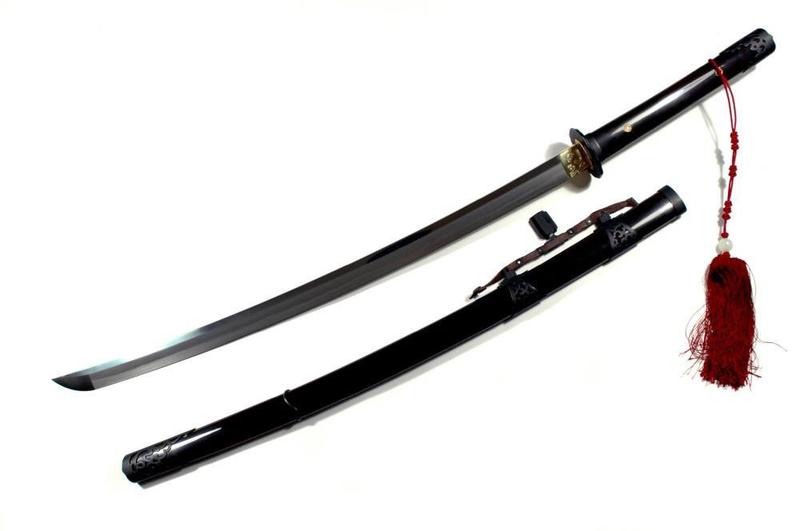Tu carrito está vacío

 Swordmaking in the Korean Peninsula peaked during the Joseon Dynasty (15th to 19th centuries). During this era, swordsmiths produced a wide range of bladed weapons, some of which were designed for use in battle, with others designed for ceremonial purposes. Traditional Korean swords, however, typically have a few distinguishable characteristics.
Swordmaking in the Korean Peninsula peaked during the Joseon Dynasty (15th to 19th centuries). During this era, swordsmiths produced a wide range of bladed weapons, some of which were designed for use in battle, with others designed for ceremonial purposes. Traditional Korean swords, however, typically have a few distinguishable characteristics.
Single-Edge Blade
While there were several exceptions, most traditional Korean swords featured a single-edged blade. This style was preferred over double-edged blades, as it allowed for differential heat treatment while also preserving the blade's strength and structural integrity.
No Fuller
If you inspect genuine traditional Korean swords, you'll notice that very few contain a fuller. Also known as blood grooves, a fuller is a beveled groove in a sword's blade. It typically runs most or all of the blade's length and is created using a spring swage tool. A fuller is often added to swords to make them lighter and more stable. Korean swords, however, were rarely made with this feature, instead featuring a solid blade without this characteristic beveled groove.
Long Length
In addition to a single-edge blade, traditional Korean swords were also relatively long. The jedok geom and bonguk geom, for instance, typically featured three-to-four-foot-long blades. However, the jedok geom often featured a six-foot-long blade. The long blades of traditional Korean swords allowed soldiers to engage enemies at a safe distance while minimizing their own risk of injury.
Decorations
Traditional Korean swords are often heavily decorated, featuring carvings and intricate details that are designed specifically for aesthetic purposes. Some of these decorations were done on the hilt or pommel, whereas others were included on the actual blade. Additionally, some Korean swords were designed strictly as a status symbol, featuring even more decorations than standard swords.
Guard
Another common feature found in traditional Korean swords is a guard. Found directly on top of the hilt and below the blade, it's used to protect the person's hands from injury. Of course, guards are used in a wide range of swords and bladed weapons, only one of which are Korean swords.
Scabbard
Korean swords were often accompanied with a matching scabbard in which to sheathe the sword. Some of these scabbards were made of leather, wood and even metal. When a soldier wasn't using his sword, he would store it in the scabbard for protection. This helped to protect the blade from unnatural wear and tear while also reducing accidental cuts and injuries.